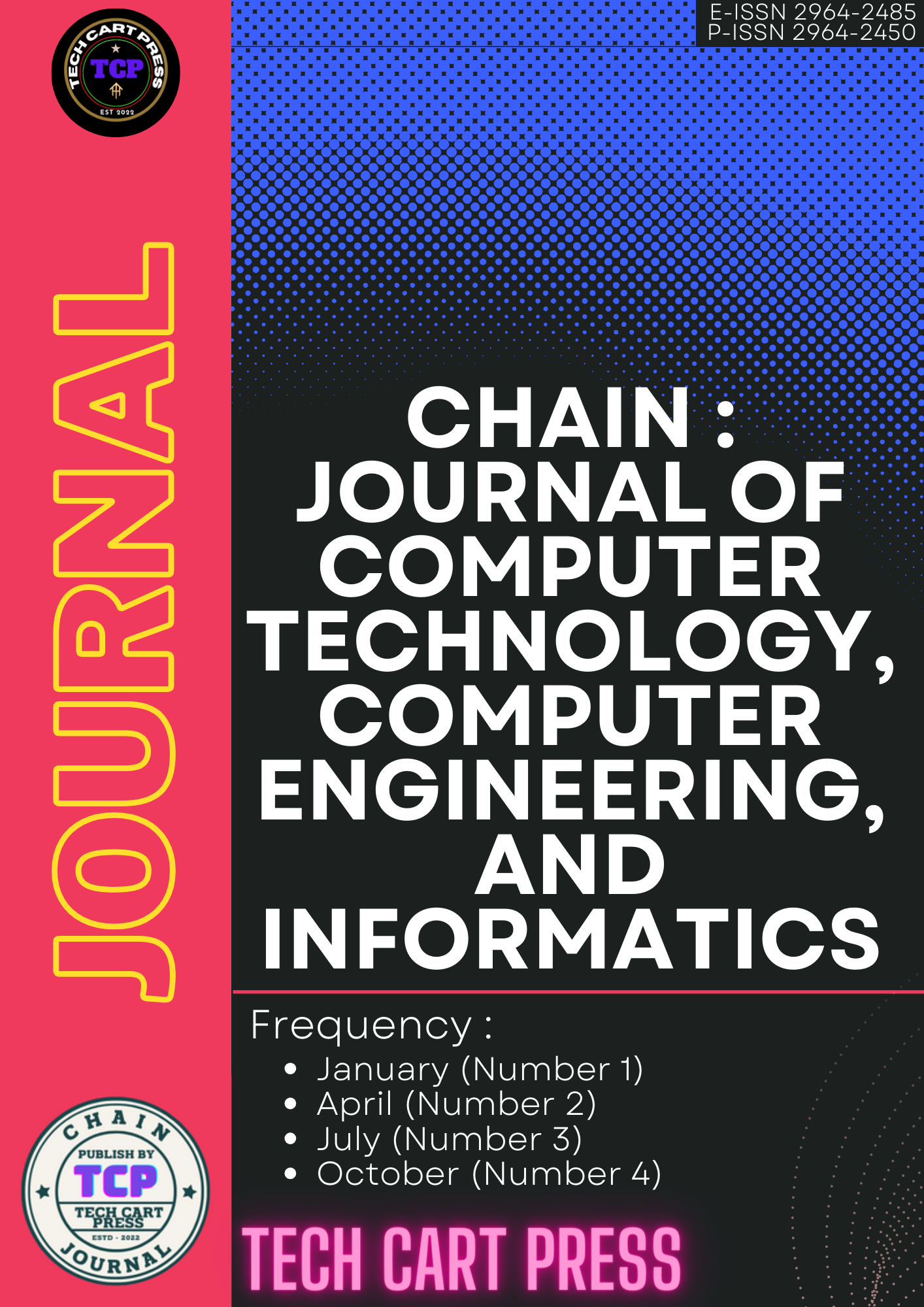Sistem Pendukung Keputusan Pemilihan Guru TIK Berprestasi Menggunakan Metode SMART
Abstract
Information and Communication Technology (ICT) teachers are educators who have a vital role in teaching technology-related skills and knowledge to students, with the aim of equipping them to face the digital era. One of the main problems is the use of traditional methods that are subjective or the lack of a data-driven decision support system, which can lead to biased selection results. As a result, the potential of teachers who are actually superior may not be well identified, which can have an impact on the overall quality of ICT learning. ICT teachers are often associated with the standardization of assessment criteria that are inconsistent or less objective, and the selection process often relies on personal assessments or opinions that can vary from one evaluator to another, resulting in decisions that are not always objective. The application of the SMART method in SPK to determine outstanding ICT teachers. This study uses a number of assessment criteria, such as pedagogical competence, mastery of ICT materials, innovation ability in learning, communication skills, and contribution to student achievement. The results show that the SMART method can accommodate the assessment systematically and objectively, providing the best teacher recommendations with high transparency. The ranking results show the performance of outstanding ICT teachers based on the total score obtained. Teacher E ranked first with the highest score of 0.9049, which reflects a very superior performance compared to other teachers. In second place, Teacher B got a score of 0.8096, showing a very good performance, although slightly below Teacher E. Teacher A was ranked third with a score of 0.5953, showing a fairly good performance but still far from the top two rankings.
References
R. D. Gunawan and F. Ariany, “Implementasi Metode SAW Dalam Sistem Pendukung Keputusan Pemilihan Plano Kertas,” J. Artif. Intell. Technol. Inf., vol. 1, no. 1, pp. 29–38, 2023.
A. Hia, M. Marsono, and T. Syahputra, “Sistem Pendukung Keputusan Menentukan Performance Cleaning Service Menggunakan Metode COPRAS,” J. Sist. Inf. Triguna Dharma (JURSI TGD), vol. 1, no. 3, p. 157, May 2022, doi: 10.53513/jursi.v1i3.5120.
D. Handoko, “Sistem Pendukung Keputusan Pemilihan Kapten Tim Futsal Dengan Metode Analytical Hierarchy Process (AHP),” J. Ilm. Inform. dan Ilmu Komput., vol. 1, no. 2, pp. 77–86, 2022.
S. Setiawansyah, “Kombinasi Pembobotan PIPRECIA-S dan Metode SAW dalam Pemilihan Ketua Organisasi Sekolah,” J. Ilm. Inform. dan Ilmu Komput., vol. 2, no. 1, pp. 32–40, 2023.
Setiawansyah, S. Sintaro, and A. A. Aldino, “MCDM Using Multi-Attribute Utility Theory and PIPRECIA in Customer Loan Eligibility Recommendations,” J. Informatics, Electr. Electron. Eng., vol. 3, no. 2, pp. 212–220, Dec. 2023, doi: 10.47065/jieee.v3i2.1628.
A. R. Mishra, P. Rani, F. Cavallaro, I. M. Hezam, and J. Lakshmi, “An Integrated Intuitionistic Fuzzy Closeness Coefficient-Based OCRA Method for Sustainable Urban Transportation Options Selection,” Axioms, vol. 12, no. 2, p. 144, Jan. 2023, doi: 10.3390/axioms12020144.
S. Surati, S. Siswanti, and A. Kusumaningrum, “Metode Simple Multi Attribute Rating Technique Untuk Sistem Pendukung Keputusan Penentuan Penerima Beasiswa,” J. Ilm. SINUS, vol. 20, no. 2, pp. 57–66, 2022.
S. H. Hadad, “Metode Simple Multi-Attribute Rating Technique (SMART) dan Rank Reciprocal (RR) dalam Penentuan Penerima Beasiswa,” J. Data Sci. Inf. Syst., vol. 2, no. 1, pp. 18–28, 2024, doi: 10.58602/dimis.v2i1.99.
H. I. Santoso, “Seleksi Penerimaan Programmer Menggunakan Simple Multi Attribute Rating Technique Method (SMART Method) dan Rank Order Centroid,” J. Inf. Technol. Softw. Eng. Comput. Sci., vol. 2, no. 1, pp. 31–39, 2024.
S. Setiawansyah, V. P. Sabandar, M. Mesran, A. T. Priandika, and A. Surahman, Buku Referensi : Multiple-Criteria Decision Making dan Pivot Pairwise Relative Criteria Impotance Assessment Sebagai. Bandar Lampung: CV Keranjang Teknologi Media, 2024. [Online]. Available: https://ebook.kertekmedia.com/detailebook.php?title=Buku-Referensi:-Multiple-Criteria-Decision-Making-dan-Pivot-Pairwise-Relative-Criteria-Impotance-Assessment-Sebagai-Solusi-Pengambilan-Keputusan
J. Wang, D. Darwis, S. Setiawansyah, and Y. Rahmanto, “Implementation of MABAC Method and Entropy Weighting in Determining the Best E-Commerce Platform for Online Business,” JiTEKH, vol. 12, no. 2, pp. 58–68, 2024, doi: 10.35447/jitekh.v12i2.1000.
J. Wang, S. Setiawansyah, and Y. Rahmanto, “Decision Support System for Choosing the Best Shipping Service for E-Commerce Using the SAW and CRITIC Methods,” J. Ilm. Inform. dan Ilmu Komput., vol. 3, no. 2, pp. 101–109, 2024, doi: 10.58602/jima-ilkom.v3i2.32.
G. Y. K. S. Siregar and I. A. Wulandari, “Implementasi Metode Fuzzy Dalam Proses Pemilihan Guru Terbaik,” Int. Res. Big-Data Comput. Technol. I-Robot, vol. 6, no. 1, pp. 1–10, 2022.
A. Rambe, S. Abdy, and T. S. Alasi, “Pemilihan Guru Berprestasi Menggunakan Metode SAW Berbasis Web Pada SMP Swasta Prima Tembung,” J. Armada Inform., vol. 7, no. 2, pp. 316–322, 2023.
A. T. P. Raharjo, W. E. Triatma, and Y. Litanianda, “Sistem Pendukung Keputusan untuk Menentukan Pemilihan Guru Berprestasi menggunakan Metode Promethee pada SMAN 1 Tegalombo Kabupaten Pacitan,” J. Ilm. Edutic Pendidik. dan Inform., vol. 9, no. 2, pp. 149–161, 2023.
H. B. Santoso, I. W. Sriyasa, and P. Citra, “Kombinasi Metode SWARA dan SMART Dalam Sistem Pendukung Keputusan Pemilihan Guru Berprestasi,” J. Artif. Intell. Technol. Inf., vol. 2, no. 1, pp. 38–50, 2024, doi: 10.58602/jaiti.v2i1.102.
Copyright (c) 2024 Yuri Rahmanto

This work is licensed under a Creative Commons Attribution-ShareAlike 4.0 International License.






